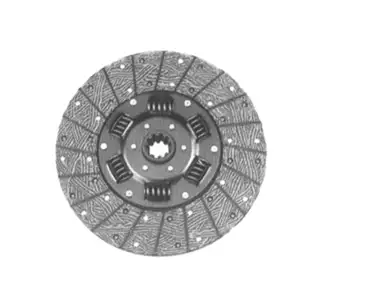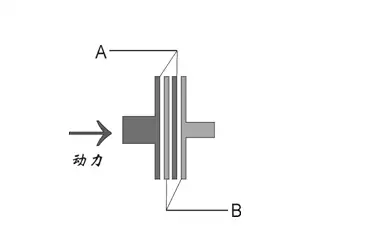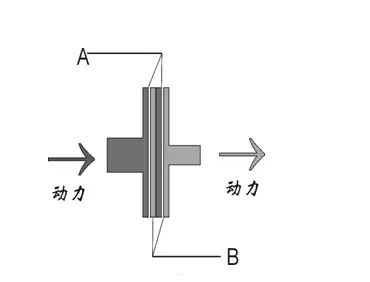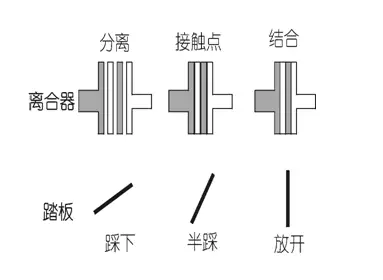The vast majority of vehicles on the road today are manual transmission types. In order to control a vehicle with a manual transmission, it is necessary to use the clutch.

1. Novices are afraid of the clutch: As the saying goes, the key to driving is to steer and brake. However, at the beginning of the road, novices may not be afraid of the steering wheel or stepping on the brakes. Instead, they are overwhelmed by the inability to operate the clutch:
Either the engine is turned off at every turn when starting, or the vehicle moves like a "swing";
Either you are always in a hurry when following the car or changing gears, and you don't know which side you should go to first;
When reversing the car, I was trembling, staggering, and frequently turning off the engine...
Not only are novices afraid of this clutch, but even the lack of stability of "one foot high, one foot low" when those "half veterans" drive a car has a lot to do with the operation of this clutch.
Therefore, the automatic transmission car is the dream of many people, but the driving masters also like the manual transmission vehicle very much. Without this clutch, they still feel that they are "unable to play".
High-end cars of world-renowned brands all have manual transmission styles. So how can we really use the clutch well?
2. The soft adjustment between the two hard guys: The car is powered by the engine, and then through the clutch as an intermediary, it is handed over to the gearbox for speed ratio conversion, and finally transmitted to the chassis to drive the wheels.

The engine can increase its running speed from a standstill to several thousand revolutions per second in a second or two, which is a very rapid change.
As for the body of the vehicle, because its mass is countless times greater than that of the engine, the inertia effect is also very large, and it can undergo great changes in a short period of time.
Although the gearbox can be used to adjust the speed difference between the engine and the body, it cannot switch on or off the power transmission between the two. If it is used for speed ratio change (shifting) rigidly, the result will be gear damage , or even damage the vehicle, which will cause big trouble.
Because the two "hard guys" of the engine and the body will not let anyone else, and as the vehicle travels on roads with different resistances, the contradiction between the engine and the body in terms of speed and power matching needs to be adjusted at any time.
(1) Completely separated state: all the power generated by the engine can be cut off.

(2) Close at hand (semi-linked state): Only a part of the power generated by the engine can be transmitted.

(3) Fully combined state: it can transmit all the power generated by the engine without compromise.
It is precisely because of the special ability of the clutch that "combines rigidity and softness" that the frequent unbalanced contradiction between the engine and the body can be alleviated, so that the vehicle can drive steadily.
3. The contact point of the clutch: There are only three ways for the clutch to work: complete separation, indistinct separation and complete integration. Let us first understand them separately:
(1) Complete separation: When the clutch pedal is fully depressed, the friction plates of the clutch are also completely separated, at this time the power transmission is completely suspended, and the engine and the body are completely separated in power transmission.
At this time, even if the speed of the engine is as high as tens of thousands of revolutions per second, there will not be any power transmitted from the friction plate of the clutch A group to the other group B of the friction plate. The power transmission channels from the engine to the gearbox and the drive wheels are all interrupted, as if the gearbox is in neutral.
(2) Complete combination: When the depressed clutch pedal is fully released, or when the left foot is completely removed from the clutch pedal, then the two groups of friction plates A and B will be most tightly pressed under the action of the spring. combine together.
As long as the gearbox is not in neutral, all the power generated by the engine will be transmitted to the body without compromise.
(3) Semi-linkage: In addition to the above two working modes of on or off, the clutch can also work in a state of separation:
It is said that it is combined, just "scratching the skin", because at this time the left foot is stepping on the clutch pedal with a certain force, so that there is a certain gap between the friction plates, so when the power from the engine passes through the clutch, it cannot be ignored. Transfer all without compromise, but with a little discount.
It is said that it is disengaged, whether the clutch pedal is fully depressed at this time, there is more or less power to be transmitted to the rear.
The adjustment effect of the clutch on the smooth operation of the vehicle, that is, the knowledge of using the clutch, is mainly in this half-linkage.
(4) Contact point: From the previous analysis, we can see that in the process of using the clutch, the process from separation to combination and from combination to separation is not accomplished overnight, but has many levels and transition periods.
But in this indistinct semi-continuous process, which moment has the greatest impact? This is the moment when the point of contact is reached.
Taking starting as an example, it is not that there is no contact between the friction plates of the clutch in the early stage of the semi-linkage process, but that the gap is too large and the discount is too large. At this time, although the power of the engine is very abundant, the actual power transmitted to the body is less than that of the body. resistance, so the vehicle is motionless.
And when the actual transmission power is equal to the resistance, or slightly greater than the resistance, the body will move slightly, and at this time the contact point has been reached.
If the clutch is moved closer to the fully combined state, the vehicle body will overcome the resistance and start to move.
For a person who is skilled in using the clutch, you can't feel that he is starting and changing gears, just like driving a continuously variable automatic transmission vehicle.
In fact, the key lies in his deep understanding that the so-called semi-linkage is a process, and the contact point is the most important turning point in this process. And the correct handling of the journey from the contact point to the fully combined state is the essence of clutch use.
4. One in and one out and clearly distinguishing who is in and who is out: From the above discussion, the structure and function of the clutch can be known as it is and why. The question is: how to make good use of it and make full use of it in actual combat.

(1) Application at the start: The characteristic of the start is that the vehicle has to overcome the static inertia, as well as the resistance of various aspects such as road and mechanical friction.
If the speed and output power of the engine are not enough, the vehicle cannot be driven. At this time, the clutch is released to connect them, which will cause the engine to stall;
However, if the speed and output power of the engine are too high, when the clutch is released suddenly to drive the body in a stationary state, it will cause serious impulse or damage to the machine parts.
It can be seen from the figure that once the clutch reaches the contact point, if the clutch pedal is released too quickly:
(1) The speed of the engine is high and the power is abundant, and the vehicle will have an impulse to go forward.
(2) If the speed of the engine is insufficient, the power is not sufficient, and the accelerator cannot be increased in time, the engine will be turned off immediately, which is commonly known as "choking the engine to death".
The relationship to be coordinated at this time is: the engine should gradually increase the speed and power to drive the vehicle; the clutch should be slowly combined to make the engine and the body linked. That is to say, one in and one out between the clutch pedal and the accelerator pedal.
But if the two are handled at the same time, the accelerator is a variable, and the clutch is another variable. It is difficult for veterans to take care of both, let alone novices?
Therefore, in most cases, the accelerator is given too small, and the clutch is returned too quickly, causing the engine to stall and the start to fail.
On the contrary, it is overkill, the accelerator is added too much, but the clutch cannot be released for a long time, the engine is too high to cause unnecessary wear and tear, and the vehicle cannot start for a long time.
Or in a panic, the clutch pedal is stepped back out and stepped in, and then stepped back out and stepped in. During the repetition, the vehicle staggers like a "swing".
When the coaches all over the world tell how to use the clutch, they all teach the students to "one in and one out" for the two pedals of the accelerator and the clutch, just like reciting a mantra.
In the process of instructing a large number of novices, the author found through induction and summary that only a divide and conquer method can be adopted, that is, only one variable can be determined within a certain period of time, and the effect improvement is very significant.
The method is to slowly increase the accelerator to a certain position, and then lightly release the clutch to find the contact point. At this time, the vehicle will move slightly, and the clutch pedal will be fixed immediately.
Then gradually increase the accelerator, let the vehicle start smoothly, and then slowly release the rest of the clutch pedal.
Because the problem of dealing with two variables at the same time is resolved to only deal with one variable at a time, it can be dealt with calmly and will not be messed up. All the novices and novices who are being coached, have thus found a "feel" for getting started.
You might as well practice this method carefully to see if the engine will stall, if the body will shake, and how the overall effect is!
(2) Handling of shifting up and down: shifting is divided into shifting up and downshifting, and the power transmission must be temporarily interrupted to proceed.
The difference from the start is that the vehicle is already in motion and has a certain inertia. Therefore, although improper use of the clutch will not cause the engine to stall, it will also cause impulse and mechanical wear, among which:
1. When shifting up, if the clutch is released too quickly, the vehicle will rush forward driven by the engine, as if being pushed forward.
2. When downshifting, if the clutch is released too quickly, the vehicle will pause backward under the obstruction of the engine, as if being pulled by something.
How to eliminate this effect? It is still the old way. When the contact point is reached, first hold the clutch so that the engine and the body are balanced at the new gear ratio, and then slowly release the rest of the clutch pedal.
If the clutch is used well, the vehicle will run smoothly, the driver will be chic, the rider will be comfortable, and at the same time, the caring for the vehicle can be realized.